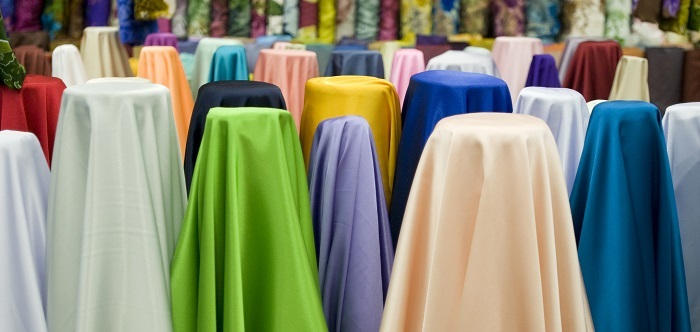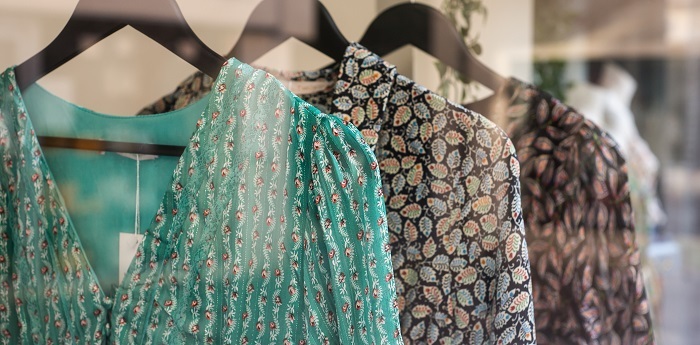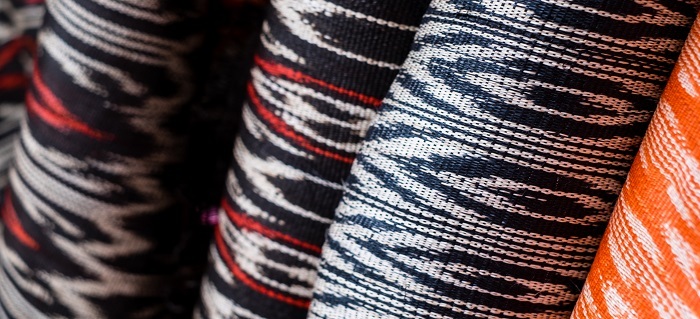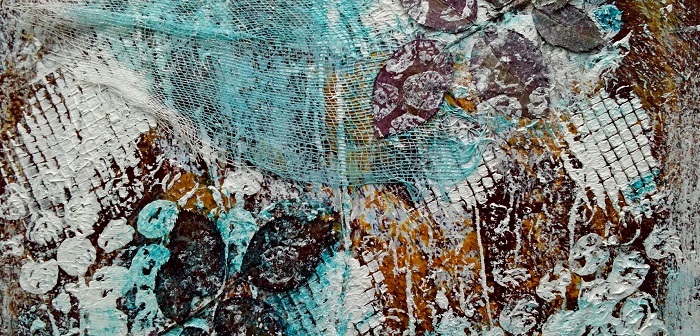- Western Dress Codes
- Types of Uniform
- Types of Identification-Based Clothing
- Tribal Fashion
- Top Italian Fashion Brands
- Top Fashion Brands in the U.S.A.
- Top Fashion Brands in the U.K.
- Top Fashion Brands in India
- Top Fashion Brands in France
- The British Fashion Awards
- Soviet Fashion
- South Korean Fashion
- Runway Fashion
- Purpose of Clothing
- Offshore vs. Domestic Apparel Manufacturing
- Off-shore Manufacturing
- Indian Wedding Attire
- Indian Tribal Fashion
- Indian Menswear Fashion Market
- Importance of Military Uniforms
- Importance of Khaki Uniforms
- Folk Costume
- Fashion Educational Programmes
- Fashion Design Copyright
- Extreme Environment Clothing
- Artificial Hair Integrations
- Role of Crafts in Setting Up Trending Fashion
- Major Ethical Issues in Fashion
- Major Cultural Issues in Fashion
- Major Challenges in the Fashion Industry
- Macro Environmental Factors in Fashion Industries
- Knock-offs in Fashion
- Importance of Arts and Designs in Fashion
- Fashion Follower
- Fashion Trend: Definition & Meaning
- Sustainable Fashion Vs Slow Fashion
- Slow Fashion: Meaning and Significance
- Fast Fashion: Meaning and Impact
- Fossil Fashion: Meaning & Significance
- Clothing Swap: Meaning and Significance
- Fashion Consumer Segmentation
- Fashion Movement: Meaning & Definition
- Pendulum Swing in Fashion
- Social Factor Influencing Fashion
- Roles of Fashion in Our Society
- Fashion Trends & Forecasting
- Fashion: Influenced by Geography
- Fashion: Influenced By Celebrities
- Fashion In India
- Fashion: Definition And Meaning
- Factors Influencing Fashion
- Economic Factor Influencing Fashion
History of Fashion
- Zara: A Brand That Created History
- H&M: A Brand’s History
- French Fashion in the Eighteenth Century
- History of Western Fashion
- History of Indian Fashion
- History of the Sewing Machine
- History of Textile Design
- Indian War Costumes
- Uniforms Worn During World Wars
- Sumerian Costume
- Significance of Ritual-Based Clothing
- Significance of Armor
- Significance of Adornment-Based Fashion
- Roman Costume
- Primitive Sources of Clothing
- Origin and Development of Costumes
- Modern Indian Fashion: Before Independence
- Modern Indian Fashion: After Independence
- Medieval War Costumes
- Major Events in Modern Indian Fashion
- Influence of War Uniforms on Civilian Clothing
- How Do Historical Arts and Culture Inspire Fashion Trends?
- History of Clothing
- Greek Costume
- Evolution of Modern Indian Fashion
- Empire Silhouette
- Emergence of India as a Fashion Centre
- Egyptian Costume
- Effects of the Industrial Revolution on Indian Fashion
- Effect of World Wars on Fashion
- Babylonian Costume
- Assyrian Costume
- Armour Accessories
- Archetypes of Costume: Meaning and Types
- A Story of Fashion Evolution
- History of Fashion Design
Fashion & Styles
- Throwaway & Fast Fashion
- The Fashion System
- Symbolic Meaning of Fashion
- Kalamkari Work: A Traditional Indian Art
- Hair Repair Line
- Hair Care Tips
- Hair Care Products
- Hair Care Brands
- Fringed Mullet Haircut
- Fashion Accessories
- Bridal Wear
- Best Beauty Products
- Beacon Haircut: Meaning and Type
- Banarasi Saree: The Legacy of Indian Culture
- Assembly of the Garment
- Vintage Design: A Classic Way of Fashion
- Nostalgic Modernity in Retro Style
- Counter-Culture: A Revolution
- 2010’s Fashion
- Cottagecore Fashion
- Wrestling Singlet: A Piece of Strength
- Wreath Attire
- Hippie vs. Hipster Fashion
- Fashion in 1970s
- Sportswear vs. Active Sportswear
- Tracksuit
- Women Wearing Pants
- Vietnamese Clothing
- Wrapper Clothing
- British Country Clothing
- Wrap Dress
- Wrap Clothing
- Wonju: A Bhutanese Tradition and Pride
- Vintage Clothing
- Zero-Waste Fashion: A Nature-Friendly Fashion
- Punk Fashion
- Wonsam Dress: A Tradition of Korea
- Difference Between Suit Blazers and Tuxedos
- Lolita Fashion: A Subculture of Japan
- Heavy Metal Fashion
- Grunge Fashion
- Fetish Fashion: A Social Stigma or an Exhibition of Desire?
- Difference Between Lehnga and Lancha
- Difference Between Lehenga & Ghagra
- Difference Between Sherwani & Kurta
- Difference Between Gown & Long Frock
- Difference Between Pants and Trousers
- Difference Between Men’s Suit & Women’s Suit
- Western Wear: Casual
- Western Wear - Formal
- Steampunk Fashion
- Religious Outfits
- Queer Fashion
- Men’s Ready-to-Wear Garment
- Hipster Fashion: Meaning and Influence
- Hippie Fashion: An Introduction
- Hip-Hop Fashion
- Folk Fashion
- Cocktail Dress
- Banarasi Sari: An Overview
- Ready-To-Wear For Women
- Formal Wear
- Outer Wear
- Casual Wear
- Active Sports Wear
- Trimming a Garment’s Edge
- Trims - Frills
- Trim: Appliques
- Trim – Lingerie
- Meaning of Style in Fashion
- Importance of Avant-Garde Fashion
- Classification of Fashion Trims
- Types of Children’s wear Fabric
- Trim: Meaning & Significance
- Pre-Teen Clothing: An Introduction
- Infant Clothing Design Methods
- Clothing for Teens
- Fashion Matrix
- Childrenswear Market
- Women’s Ethnic Wear
- Theories of Fashion Movement
- Infant Garments
- Influence of Fashion Trends On Women’s Wear
- New Born Baby Clothes
- Indo-Western Womenswear
- Western Womenswear vs. Indian Womenswear
- Formal Womenswear
- Menswear Fabric: Meanings and Types
- Fashion Cycle
- Differences Between Shirts and T-Shirts
- Difference Between Jumpsuit and Dungaree
- Difference Between Jacket and Blazer
- Difference Between Denim and Jeans
- Children’s Wear
- Women’s Casual Wear
- Suits: Menswear
- Ready-to-Wear Vs. Haute Couture
- Ready-to-Wear (Prêt-à-Porter)
- Menswear Shorts
- Jeans: Menswear
- Indian Womenswear: Meaning and Types
- Haute Couture - Meaning & Significance
- Fashion Trends and Its Impact on Society
- Difference Between Fashion and Clothing
- Difference Between Classic and Fad in Fashion
- Color in Menswear - Meaning & Significance
- Classic Shirts and Types
- Categories in Menswear Clothing
- Boutique - Meaning & Types
- Avant-Garde Fashion: Meaning & Significance
- Avant-Garde Fashion vs. Haute Couture
- An Introduction to Womenswear
- Fad Fashion: Definition & Meaning
- Classic Fashion: An Evergreen Fashion
- Street Fashion: Meaning & Trends
- Types of Fashion Styles
- Types of Fashion Designs
Fashion Designers
- Zac Posen
- Virgil Abloh
- Victoria Caroline Beckham
- Vera Wang
- Tory Burch: A Modern Icon
- Tan France: Queer Eye
- Riccardo Tisci
- Pierre Cardin: The Triumph of the Fashion World
- Phoebe Philo
- Paul Smith: “Classic with a Twist”
- Nicholai Olivia Rothschild
- Mossimo Giannulli: A Millionaire Fashion Designer
- Michael D. Kors
- Mary-Kate Olsen
- Manish Malhotra: Heart of Bollywood Designing
- Manfred Thierry Mugler
- Kate Spade
- Jonathan Jony Ive: The Chief Creator
- Jill Sander: The Queen of Minimalist Fashion Style
- Jessica Simpson: Actress Turned Designer
- Jackson Wang: A Versatile Designer
- Isabel Marant: Extraordinary Yet Relatable
- Hubert de Givenchy: Styling with Dedication
- Guccio Gucci: Founder of a Global Brand
- Gloria Vanderbilt: The Poor Little Rich Heiress
- Georgina Rose Chapman
- Elsa Schiaparelli
- Daphne Guinness: A Versatile Designer
- Cristóbal Balenciaga
- Christian Audigier: “King of Jeans”
- Chloe Sevigny: A Creative Designer, Model, & Actor
- Chiara Ferragni
- Celestine Beyoncé Knowles-Lawson
- Anna Sui: Modernity with Style
- Allegra Versace Beck
- Salvatore Ferragamo: A Name of Designing and Innovation
- Jimmi Choo: Designer of Luxury Fashion
- Alexandre Herchcovitch: An Eclectic Designer
- Anju Modi: The Diva of Fashion World
- Tarun Tahiliani
- Stella McCartney: Working Towards Nature
- Rohit Bal: A Vintage Designer
- Ridhi Mehra: Growing Indian Fashion Globally
- Ralph Rucci
- Nishika Lulla: A Stylist Fashion Designer
- Masaba Gupta: A Designer of Innovation
- Jean-Paul Gaultier: A Haute Couture Designer
- Herve Leger: Bandage Dress Innovation
- Carolina Herrera
- Ashmita Marwa: A Creative Fashion Designer
- Archana Rao: A Creative Fashion Designer
- Anamika Khanna: A Tradition of the Modern Era
- Ankur Modi and Priyanka Modi (AMPM): A Step Towards Simplicity
- Sandy Powell: Eclectic and Adventurous Style
- Roberto Cavalli: King of Bling
- Domenico Dolce and Stefano Gabbana
- Bhanu Athaiya: The Oscar Lady
- Alexander McQueen: An Innovative Designer
- Valentino Garavani: A Luxury Fashion Designer
- Karl Otto Lagerfeld: The Emperor of Fashion
- Betsey Johnson: A Trendy Designer of 1970s
- Tommy Hilfiger: Creator of a Luxury Brand
- Miuccia Prada: A Stylish Fashion Designer
- Sandeep Khosla and Abu Jani
- Payal Singhal: A Versatile Designer
- Bibhu Mohapatra: Heritage is Foundation of Creativity
- Sanjay Garg: A Swish Fashion Designer
- Ritu Kumar: The First Female Fashion Designer of India
- Neeta Lulla: An Iconic Fashion Designer
- Sabyasachi Mukherjee: A Versatile Fashion Designer
- The Man Behind Saree: Gaurang Shah
- Donna Karran: The Fashion Queen of America
- Christian Louboutin: The Magic Shoe Man
- Anita Dongre: An Ethnic Fashion Designer
- Yves Saint Laurent: From Aesthetics to Modernity
- Ralph Lauren: King of Luxury Fashion
- Marc Jacobs: A Young Fashion Designer
- Giorgio Armani: From Vogue to Vintage
- Donatella Versace: A Versatile Designer
- Coco Chanel: An Inventor of Fashion Design
- Calvin Klein The Magic Creator
- Role of Fashion Designer
- Kamaladevi Chattopadhyay: A Fashion Activist
- Indian Fashion Designers of the Modern Era
- Fashion Innovators: Role in the Fashion Industry
- Fashion Technologist: Roles, Education, And Career
- Fashion Professionals: Roles, Education, and Career
- Fashion Merchandisers: Roles, Education, & Career
- Fashion Designers During World War II
- Fashion Designer: Role, Education, and Career
- Claire McCardell: A Classic Fashion Designer
- Christian Dior: A Trendy Fashion Designer
- Types of Fashion Designers
- Sustainable Fashion Designers: Role & Significance
Fashion Centers
- Rome: As a Fashion City
- Paris Fashion History
- Madrid: As a Fashion City
- London Fashion Week
- Lakmé Fashion Week
- India Fashion Week
- Berlin Fashion Week
- Berlin: As a Fashion City
- Barcelona: As a Fashion City
- Tokyo: As a Fashion City
- Paris: As a Fashion Capital
- Paris Fashion Week
- New York: As a Fashion Capital
- New York Fashion Week
- Milan: As a Fashion Capital
- Milan Fashion Week
- Fashion Capital: Meaning and Features
- London: As a Fashion Capital
- World’s Top Fashion Events
- India’s Top Fashion Events
Fashion & Technology
- Electric Jacket: An Example of Dream Innovation
- Elevator Shoes: A Style of Short Guys
- Digital Fashion: A Creation of Modern Technology
- Gore-Tex Fashion
- Fashion Communication
- Clothing Technology
- Retrofuturistic Clothing: Meaning and Future Prospects
- Wearable Technology: Meaning and Significance
- Etextiles: Meaning and Significance
- Ecofashion: Meaning and Future Prospects
- Copycat Culture and Fashion
- Circular Fashion: Meaning & Significance
Fashion Accessory
- Tie: Meaning & Significance
- Shoes for Women
- Shoes for Men
- Scarfs: Meaning & Significance
- Rings: Meaning and Significance
- Polki Jewellery: Meaning & Significance
- Necklace: Meaning & Types
- Navratna Jewellery: Meaning & Types
- Meenakari Jewellery: Meaning & Types
- Kundan Jewellery: Meaning & Style
- Jewellery Materials: Meaning & Types
- Hats: As a Fashion Symbol
- Handmade Jewellery: A Symbol of Culture
- Gloves: Meaning & Significance
- Footwear Materials: Meaning & Types
- Footwear Designing: Scope & Career
- Filigree Jewellery: Meaning and Making
- Bow Tie: Meaning & Types
- Fashion Accessory: Meaning And Significance
Fashion Design
- Use of Art, Design, And Craft in Fashion Industry
- The Traditional Textiles of India
- The Role of Technologies in The Fashion Industry
- Surface Ornamentation: Meaning and Techniques
- Stitch Per Inch: Meaning and Types
- Stand Collar Vs Flat Collar Vs Roll Collar
- How to Operate a Power Sewing Machine?
- Dobby Vs Jacquard Design
- Design Management: Definition and Meaning
- Continuous Placket: Meaning and Methods
- CAD and Weaving
- Neckline Facings
- Fabric Cutting
- Types of Collar
- Threading Sewing Machine
- The Importance of Color Schemes in Fashion Design
- Textile Design: Meaning and Types
- Terminologies of Measurements
- Techniques to Make Design Beautiful and Attractive
- Techniques for Self-Enclosed Seams
- Techniques for Body Measurements
- Technique of Top Stitching Seams
- Technique of Mock Flat-Felled Seam
- Significance of Fibers in Clothing
- Sewing Tools
- Self-enclosed Seams: Meaning and Types
- Secondary and Tertiary Colour Formation Processes
- Seams: Meaning and Types
- Seam Finishing Techniques
- Safety Rules for Sewing
- Role of Designers in Fashion
- Role of “Contrast” in Design
- Psychological Effects of Colors
- Process of Manufacturing Yarn
- Procedure and Selection of Underlying Fabric
- Preshrinking the Fabric
- Pleat: Meaning and Types
- Placket: Meaning & Types
- Peter Pan collar
- Pattern Making: Meaning and Types
- Pattern Layout: Meaning and Types
- Origin and Role of Pattern Development in Fashion
- Neckline Finished with Bias Facing
- Neck Line Finished with Shaped Facing
- Natural Dyes: Advantages and Disadvantages
- Methods of Printing
- Methods of Dyeing
- Marking Methods in Textiles
- Manmade Fibres vs. Natural Fibres
- Manmade Dyes: Advantages and Disadvantages
- Luxury Fabrics: Meaning and Definition
- Knitting vs. Weaving
- Jewellery Designs
- Importance of Printing in Fabrics
- Identifying the Right Side of Fabric
- How to Identify a Good-Quality Fabric?
- Green Color Psychology
- General Theory of Dyeing
- French Placket: Meaning and Types
- Fibers and Fabrics: Meaning and Types
- Fashion Plate: Definition and Meaning
- Fashion Design and Development Processes
- Fabric Used in India
- Fabric Preparation
- Fabric Grain: Meaning and Types
- Expensive Suit Fabrics
- Elements and Principles of Design: Definition and Meaning
- Difference Between Transfer Printing and Digital Printing
- Difference Between Real and Implied Textures
- Difference Between Polyester and Viscose
- Difference Between Nylon and Acrylic Fibres
- Difference Between Cotton and Wool Fibres
- Difference Between Cotton and Jute Fibres
- Design Pattern in Dart
- Cuffs: Meaning and Types
- Computerized Marker Making
- Colour Theory and Colour Psychology
- Colour Palette in Design
- Block Printing: Definition & Meaning
- Block or Sloper Pattern Design
- Best Suit Fabric for Women
- Advantages of Digital Printing
- "Emphasis" in Design
- Elements of Design
- Principles of Design
Fashion Influencers
- Emma Chamberlain: As a Fashion Influencer
- Elle Fanning: As a Fashion Influencer
- Doja Cat: As a Fashion Influencer
- Bangtan Sonyeondan (BTS)
- The Beatles: As a Fashion Influencer
- Franca Sozzani: As a Fashion Icon
- Carine Roitfeld: As a Fashion Icon
- Patricia Field: As a Fashion Icon
- Grace Coddington: As a Fashion Icon
- Edith Head: As a Fashion Icon
- Michael Jackson: As a Fashion Icon
- Lady Gaga: As a Fashion Icon
- Jean Harlow: As a Fashion Icon
- James Dean: As a Fashion Icon
- Isabella Blow: As a Fashion Icon
- Farrah Fawcett: As a Fashion Icon
- Naomi Campbell: As a Fashion Icon
- Michelle Obama: First Lady as a Fashion Icon
- Josephine Baker: As a Fashion Icon
- Jane Birkin: As a Fashion Icon
- Gisele Bündchen: As a Fashion Icon
- Brigitte Bardot: As a Fashion Icon
- Andy Warhol: King of Pop Art
- Bettie Page: Queen of Pin-Ups
- Jean Patou: As a Fashion Icon
- Beverly Johnson: As a Fashion Icon
- Sara Blakely: Self-Made Female Billionaires
- Rudi Gernreich: Fashion’s Utopian Prophet
- René Lacoste: As a Fashion Icon
- Rei Kawakubo: Queen of The In-Between Kingdom
- Princess Diana: Princess of Wales
- Noah Lindsey Cyrus: As a Fashion Icon
- Mary Quant: A Designer of Miniskirts
- Miley Cyrus: The Hannah Montana
- Manolo Blahnik: As a Fashion Icon
- Jackie Kennedy: As a Fashion Icon
- Issey Miyake: Symbol of Japanese Fashion
- Harry styles: As a Fashion Icon
- Grace Jones: As a Fashion Icon
- David Bowie: The Epitome of Glamrock Fashion
- The Iconic Lady of Haute Couture: Jeanne Lanvin
- Cher: A Beauty Icon of 1960s
- Billy Porter: As a Fashion Icon
- Bella Hadid: As a Fashion Icon
- André Leon Talley: Right Hand of Anna Wintour
- Tiffany & Co.
- Roy Raymond: Founder of Victoria’s Secret
- Philip Treacy: As a Fashion Icon
- John Galliano: As a Fashion Icon
- Jacques Heim and Louis Réard
- Hussein Chalayan: A Cypriot-British Fashion Designer
- Hermès: A Brand of Luxury Fashion
- Iconic Designs and Shoes of Christian Louboutin
- Zendaya Coleman: A Street Style Star
- Tracee Ellis Ross: As a Fashion Icon
- The Little Black Dress of Audrey Hepburn
- Selena Gomez: From "Girl Next Door" To "Grown and Gorgeous"
- Rihanna’s "Bad Girl" Vibe
- Paris Jackson: Tattoos and Boho Vibe
- Meghan Markle: A Sleek Stylish & Royal Diva
- Marilyn Monroe: The Seven-Year Itch Look
- Madonna: Queen of Pop & Fashion Diva
- Louis Vuitton: The History of a Brand
- Lily Collins: The Epitome of Class
- Laurel Bacall: An Iconic American Actress
- Kylie Minogue: As a Pop Princess & Style Icon
- Kylie Jenner: The Queen of Flawless Makeup and Hair
- Kristen Stewart: Androgynous Style
- Kourtney Kardashian: A Prime Style Role Model
- Katherine Hepburn: First Lady of the American Theatre
- Justin Bieber: As the Fashion Icon
- Jennifer Lopez: As a Fashion Icon
- Indian Celebrities Who Influenced Fashion in India
- Iconic Feminine Dress of Grace Kelly
- How To Style Like Madison Pettis
- Gigi Hadid: The Celebrity Fashion Icon
- Elizabeth Taylor: Queen of Diamonds
- Cindy Crawford: An Iconic Beauty
- Camila Cabello’s Fashion Style
- Blake Lively: The Timeless Beauty
- Azzedine Alaïa: Knight of The Legion of Honor
- Audrey Hepburn: As a Fashion Icon
- Ariana Grande as a Fashion Icon
Contemporary Fashion
- Why is Fashion Taking Video Games Seriously?
- Why "Unsexy" Tech Will Be a Priority in 2023?
- Value Chain & Service Value Network in Fashion Market: Case of Zara
- Useful Tools for Policymakers to Support the Performance of the Fashion Industry
- Use of Balanced Scorecard & Analytic Network Process in Fashion Industry
- Popular Fashion Magazines
- Organizational Innovation in the Fashion Industry
- Media And Marketing in Fashion Industry
- Main Seasons of Fashion Week
- Louis Vuitton Case Study
- Law, Culture, and Economics of Fashion
- Key Strategies to Maintain a Profitable Position in the Fashion Market
- Indian Fashion Market
- Impact of Brand Image on Consumer Behaviour of Luxury Goods in the Fashion Industry
- FDI and Its Effect on the Indian Fashion Apparel Industry
- Fashion NGOs and Initiatives
- Fashion Market Capitalization
- Fashion as a Tool for Social Class and Social Change
- Fabric Cutting Using Computer-Guided Knives or High-Intensity Lasers
- Demand Forecasting in the Fashion Industry
- Cornerstones of the Modern Fashion Industry
- Case Study of the Growth of Zara
- Case Study of the Growth of H&M
- World’s Top Apparel Brands
- Why Do Women Have a Sharper Fashion Sense Than Men?
- Urban Dressing Vs Rural Dressing
- Popular Indian Dresses
- Politics and Fashion
- National Differences in Fashion
- Modern Democracy and Dress Codes
- Market Research in Fashion: Meaning & Methods
- Fashion Sociology: Definition and Meaning
- Fashion Merchandising in Fashion Industry
- Fashion Makeup: Blumarine Fall 2010 Collection
- Fashion Blogs as A Marketing Channel
- Fashion As an Interdisciplinary Topic
- Fashion as an Integral Aspect of Modern Culture
- Fashion as a Social Phenomenon
- Fashion and Individual Identity
- Fashion and Film
- Fashion and Appearance
- Does Music Influence Fashion?
- Areas of Fashion: Retailing, Marketing, Merchandising
Textile design requires both a technical understanding and a fashion sense. Textile artists make works of art using a variety of garments and materials. The world of colour, patterns, treatments, formation, and perspective is at their feet. Anything made of yarn, textiles, or fibres is a textile. They require strength, flexibipty, abrasion resistance, and moisture control quapties in order to be useful. Textiles are occasionally employed in protective items including bulletproof vests, army helmets, and butchers’ cut-resistant gloves. Examples of textiles include the carpeting on a school’s floor, the scrubs worn by nurses and doctors, and the sound-absorbing wall coverings in a theatre.

Meaning of Textile Design
The craft of textile design requires both artistic talent and an in-depth understanding of fabrics. In this industry, having an eye for design isn’t enough because how a print looks on a certain fabric also has a big impact on how clothes are made. A distinctive print or surface pattern is vital for brand identity for many fashion firms, and textile design is a crucial component of the manufacturing process. Every area of the fashion industry, from wholesale clothing to high-end collections, uses surface design. Using a textile designer’s abipties is a fantastic way for a fashion firm to expand its product pne and stand out from the competition.
The process of designing patterns to be printed on woven, knitted, or other forms of fabrics is at the heart of the highly creative field known as textile design. Pattern creation and production management are both aspects of the discippne of textile design. A superior eye for colour, pattern, and texture as well as an appreciation for the finer points of textiles and fashion are all quapties shared by textile designers. They are also talented artists who can draw. They comprehend textile processes, are strong communicators, have problem-solving abipties, pke a challenge, and are able to keep to a budget and timepne while also recognising changes in trends and fashion.
Who is a Textile Designer?
An inspanidual who creates designs for woven, knitted, or printed materials for use in apparel and interior design is known as a textile designer. They can employ the designs they come up with for unique pnes or, more often than not, repetitive manufacturing. Due to financial pmitations, small firms frequently ignore this style of design.

However, by spending money on design work specifically suited to your business, you will stand out from the tens of thousands of mainstream designs currently available to consumers.
Types of Textile Design
There are many various industries where textile designers can be found, including fashion, the arts, and technology. Home products and the apparel or clothing sector are two common uses for textile design. It becomes clear that these textile industries are extremely different when you give them any thought. On your beds or curtains, you might adore a big, vibrant flowery pattern, but you probably wouldn’t want to put it on your clothes. As a result, while some textile designers produce fabrics and print patterns for garment fabric, others focus on designs for the home. Designers of various media, particularly those of clothes and interiors, collaborate with textile designers in this work.
In the creation of textiles and printed patterns for high fashion or more affordable ready-to-wear styles, some textile designers work in tandem with fashion designers. They might create a wide range of possibipties, such as floral or geometric patterns or vintage prints that harken back to earper fashion trends. Some patterns may include making patterns or repetitions of the same motifs that cover the entire fabric. Drawings for patterns used in kitchens, baths, or other pving spaces may be created by textile designers for use in interior design. They may be striving for certain colour schemes or for unified atmospheres that are striking, soothing, or inspired by nature. The three main discippnes of printed textile design, woven textile design, and mixed media textile design further spanide the field of textile design. These three discippnes each employ a unique set of techniques to create a surface-adorned fabric with a variety of apppcations and markets.
Printed Textile Design
Apppcation of various printing technologies to fabric, cloth, and other media results in printed textile designs. The three main discippnes of textile design are printed textile design, woven textile design, and mixed media textile design. For each, a surface embelpshed fabric is produced using a different technique, such as resist printing, repef printing, rotogravure, screen printing, transfer printing, or digital printing. These procedures imprint appeapng, frequently repeated patterns, motifs, and designs onto the fabric or cloth using a variety of inks and dyes.

The fashion and apparel sectors, the paper business, and home interior design are all primarily and intimately pnked by printed textile designers, who create patterns for carpets, wallpaper, and even ceramics.
Woven Textile Design
The art of weaving involves interlacing two yarns—a vertical thread (warp) and a horizontal yarn (weft), most frequently at right angles—to create fabric. A mechanical or computerised jacquard loom is now the most common form of loom used to generate woven textile designs. A stypzed patterned or monochromatic fabric is constructed using different types of yarns with variations in texture, size, and colour. Designs are created within the context of weaving. The designer has access to a wide variety of yarn types, including but not pmited to cotton, twill, pnen, and synthetic fibres.

The designer first defines and visuapses the threading sequence, which is customarily drawn out on graph paper known as “point paper,” in order to create the woven fabric.
Mixed Media Textile Design
Utipzing embroidery or other fabric manipulation techniques, including pleating, apppqué, quilting, and laser cutting, mixed media textile designs are created.

Traditionally, embroidery has been done by hand using numerous thread stitches to create designs and patterns on the surface of textiles. Embroidery offers the designer a great deal of artistic and aesthetic control, much pke printed textile design. Quilting, which is typically employed to improve a textile’s insulation and warmth, gives the designer the chance to incorporate aesthetic elements. Typically, quilts include geometric and collage patterns made of a variety of textiles with spanerse textures and
Conclusion
To sum up, weaving, printing, surface ornamentation, and digital design are all covered in the training of textile designers, who are also exposed to textile design studio setups, industrial facipties, and craft cluster regions across the nation. The study of the fundamental characteristics of textiles, such as ornamentation, value addition, etc., is an important component of textile design.
In textile mills and export houses, there are a variety of careers available, including working independently as a designer or entrepreneur or as a design or fabric manager for fashion designers, design studios, buying houses, handloom cooperatives, and buying agencies. The abipty to use an infinite number of tools to bring the inner workings of one’s artistic imagination to pfe makes textile design an extremely privileged profession.
